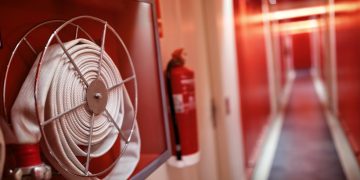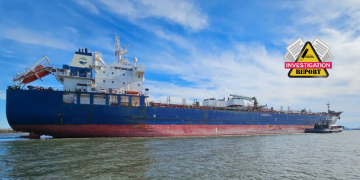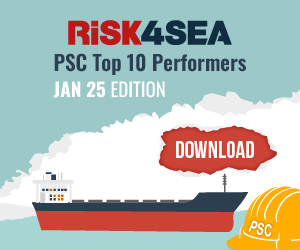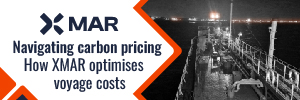NTSB has issued an investigation report into the collision between the fishing vessel Papa Rod and the anchored bulk carrier Appaloosa on May 2, 2024.
The incident
On May 2, 2024, about 0930 local time, the fishing vessel Papa Rod was underway 25 miles south of Venice, Louisiana, when it collided with the bulk carrier Appaloosa, which was anchored east of the entrance to Southwest Pass. There were no injuries, and no pollution was reported. Damage to the Papa Rod and the Appaloosa was estimated to be about $223,000.
Analysis
While the fishing vessel Papa Rod was underway near Southwest Pass on autopilot, it collided with the anchored bulk carrier Appaloosa. The deckhand on watch (deckhand 2) on the Papa Rod stated that he fell asleep at the helm. The toxicology results for deckhand 2 indicated that he had used the stimulant drug methamphetamine and a psychoactive cannabis product. The high levels of methamphetamine and its metabolite amphetamine in his urine (over 10,000 nanograms per milliliter) generally increase the likelihood that methamphetamine had been abused. However, this is not definitive, and urine toxicology results generally cannot be used to determine the precise timing of last drug use or the details of associated impairment.
Therefore, whether deckhand 2 was impaired by the effects of his methamphetamine or cannabis use at the time of the collision could not be determined. Effects from methamphetamine abuse follow a typical pattern, dominated by central nervous system stimulation in the early phase, with features of central nervous system depression emerging later as initial drug effects wear off. Such features of central nervous system depression may include sleepiness, which can be intense. Additionally, methamphetamine and amphetamine use may also interfere with proper sleep, causing sleep loss, which can lead to fatigue. Similarly, cannabis use can contribute to drowsiness in some individuals, either through acute drug effects or interference with restful sleep.
Investigators could not determine the amount of sleep deckhand 2 received before joining the Papa Rod. Although deckhand 2 reported getting 7 hours of rest/sleep before taking watch, he stated that deckhand 1 had to “holler” at him two or three times before he awakened, indicating he had difficulty waking up. Given deckhand 2’s urine results, his difficulty awakening and drowsiness could have been an effect of his drug use or a related sleep debt. However, whether deckhand 2’s drug use increased his drowsiness at the time of the collision could not be determined.
Watch alarms, while not mandatory on uninspected commercial vessels like the Papa Rod, are commonly used on vessels to wake the watchstander or alert the crew if the watchstander falls asleep. They require the operator to reset an alarm at preset time intervals to prevent the operator from falling asleep. The Papa Rod was not equipped with a watch alarm. Therefore, when the deckhand fell asleep at the helm, there was no mechanism to wake him or alert the other crewmembers.
The National Transportation Safety Board determines that the probable cause of the collision between the fishing vessel Papa Rod and the anchored bulk carrier Appaloosa was the on-watch deckhand falling asleep while operating the Papa Rod. Possibly contributing to his drowsiness were effects of his drug use or a related sleep debt.





























































